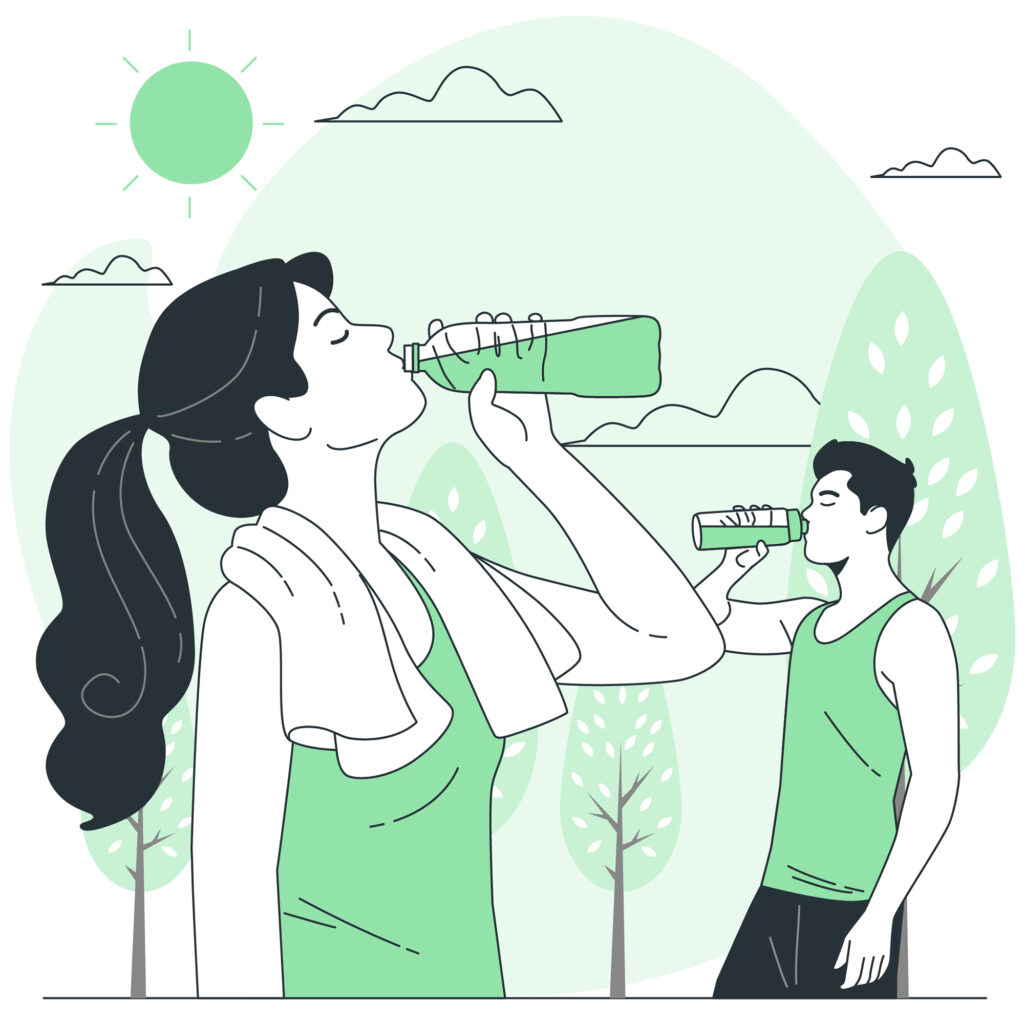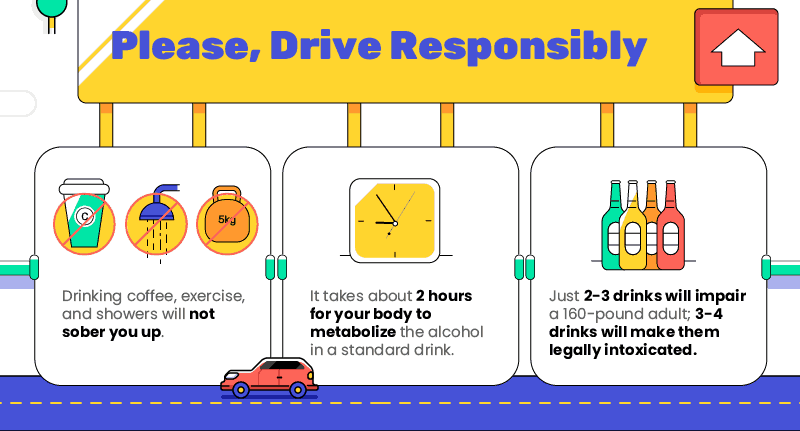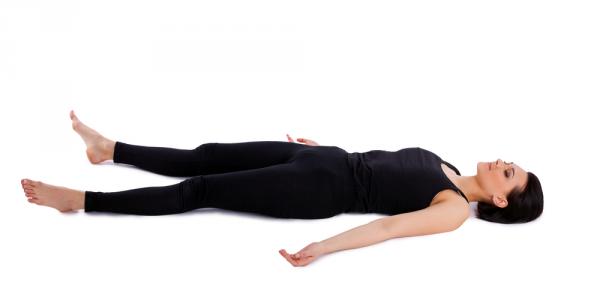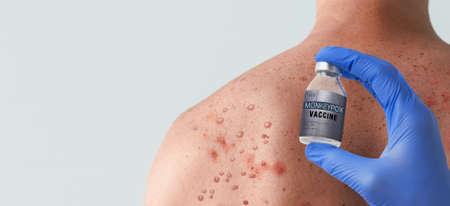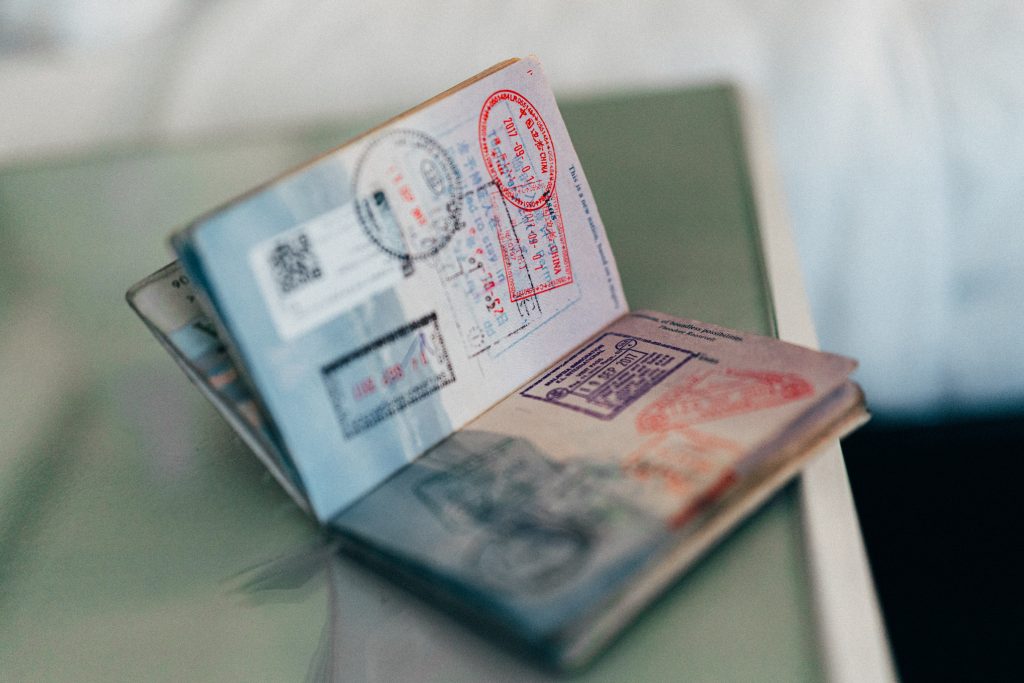Sick Abroad: My Experience Using My Patriot Travel Plan
March 16th, 2023 by Yessica PratoAs soon as countries in Asia started opening back up after COVID, I went into full planning mode. My husband and I had postponed our honeymoon yet another year because we wanted to maximize our time abroad without having to spend precious vacation days in a hotel room quarantining. Once January 2023 came around, we started our adventure through Southeast Asia visiting Japan and then making our way to the Philippines.
However, after spending years hearing nothing but coronavirus this and that, you often forget there are other diseases out there. Unfortunately, while traveling to one of the islands of the Philippines, I started feeling very sick. By the time we reached our hotel, I knew something was very wrong as the pain on my abdomen wouldn’t subside. Finding myself sick, in a country where I didn’t know the language nor how the healthcare system worked, was daunting to say the least.
Doing the job I do day in and day out, however, I’m luckier than most as it has prepared me for situations like this and most importantly to have an insurance plan to cover my medical expenses. Before our trip, I bought a Patriot Travel International Lite plan to cover my spouse and I in case the unexpected happened. From this experience, I gained a few nuggets of wisdom:
Documents? Check!
When we entered Japan, we were asked to present our travel insurance documents. Being the diligent insurance agent that I am and having heard others’ experiences while traveling, I purchased an insurance plan ahead of time. I also read my insurance documents and downloaded my documents to my phone to have on hand.
Looking back, I don’t recall reading anywhere that Japan would ask for proof of insurance but I am glad I was prepared for this question.
Did you know? – When you purchase an insurance plan through ISI, you’ll be issued an ID card as well as a visa letter. The visa letter is an official document that can be presented to an embassy, consulate or at a port of entry and it highlights the most important benefits of your plan.
As I work with insurance plans every day, I had a pretty good idea how to use my plan and what I would be covered for. However, normal people usually don’t spend their days reading through insurance documents! A simple phone call to the insurance company will help you verify your benefits. They can explain to you how to use your plan abroad and how to locate a doctor or clinic. I was able to contact the international phone line before going to the clinic and they informed me what my coverage would be.
Use Online Tools
Every insurance plan offered through ISI gives you access to an online portal where you can find providers, file your claims, extend your coverage and much more. I was able to locate a clinic in their international provider search and after going to the clinic, I took a picture of the documents and receipts the doctor gave me and uploaded my claim to the myIMG portal offered through our Patriot International plan. I’ve been able to follow up on my claim right online and upload any documentation that was missing.
Did you know? – You can find international providers right through your account when you buy a Patriot International plan. Create your account before your trip and access the international provider search here.
Bring Extra Cash
In this day and age, many places accept credit cards or bank transfers. As convenient as that sounds, if you’re visiting remote locations, cash is still needed for day-to-day transactions. My husband and I were in El Nido, Palawan, a beautiful yet remote island of the Philippines. One of the days, there was a whole island outage and thus, ATMs didn’t work.
On top of that the clinic did not accept card payments. Thankfully, we had extra cash that we could use to pay for my visit to the clinic as well as prescription medication. Generally, for minor conditions like mine, you will be expected to pay out-of-pocket and then file a claim for reimbursement. For major conditions that may require emergency procedures or life-saving treatment, you or the hospital can contact the insurance company to arrange direct billing.
After a quick recovery, we were able to finish our backpacking trip through Southeast Asia. I am very lucky I have the training to handle situations like this one in a country on the other side of the world where I did not speak the language.
At ISI, we recommend the plans we do because we know that the unexpected can happen at any time and we have personal experience with them. To learn more about a specific plan, our team of licensed insurance agents is here to assist you!
Yessica Pacheco is the Director of Customer Service at ISI. She’s originally from Colombia but has lived in the United States since 2005. She has had the opportunity to travel through Latin America, Europe and Asia. Her interest in education and international studies along with her experience in bilingual customer service led her to EIC. When not in the office, you’ll find her immersed in a good book or with her dogs at the beach.
Watch Out for Altitude Sickness
February 10th, 2023 by Lia MalconWhen I hear the term “altitude sickness” I begin picturing an intrepid explorer, strapped into climbing gear who is covered in puffy skier jacket clinging to the side of a mountain while snow falls from above.
My imagination is painting a picture of a very outdoorsy, adventurer who climbs mountains. My imagination doesn’t include a picture of myself as a tourist, strapped into a giant backpack and pulling my wheeled luggage through an airport. But it should.
Here’s the truth: anyone can experience altitude sickness. All it takes nowadays is a plane ride to be in a completely new place in the world. And if the place you’re traveling to has a higher elevation than what your body is accustomed to, you may find yourself experiencing altitude-sickness.
What is the cause of Altitude Sickness?
The pressure of the air that surrounds us is called barometric or atmospheric pressure. When visiting higher altitudes, this pressure drops and there is less oxygen available.
People that live somewhere located at a moderately high altitude will become accustomed to the air pressure. However, when traveling to a place at a higher altitude than your norm, your body will need time to adjust to the change in pressure.
Any time that you go over 8,000 feet you can be at risk for altitude-sickness. Some people find themselves more prone to altitude-sickness than others, and how your body reacts can be unique to you. It is wise to keep in mind the classic identifiers of altitude-sickness, so that you can be prepared if your condition worsens. Headaches, shortness of breath, and nausea are all classic signs of altitude sickness.
Altitude sickness, also called Mountain Sickness, has 3 levels:
- Acute mountain sickness (AMS) which is the mildest form, is very common. Some describe symptoms like a hangover: headache, dizziness and nausea.
- High-altitude pulmonary edema (HAPE) which is a buildup of fluid in the lungs. This can be very dangerous and is the most common cause of death from altitude sickness.
- High-altitude cerebral edema (HACE) is the most severe form of altitude-sickness and is a buildup of fluid in the brain. It is also life-threatening and medical attention should be sought immediately.
Are certain people more prone to Altitude-Sickness than others?
No, anyone can develop altitude sickness no matter how fit, unfit, young, old, healthy or unhealthy they may be. While there are no specific illnesses that make you more likely to develop altitude sickness, there are people who are more likely to do poorly, for example:
- People with pre-existing medical conditions should talk with a doctor before traveling to high elevation.
- Those with heart or lung disease should talk to a doctor who is familiar with high-altitude medicine before their trip.
- Those with diabetes need to be aware that their illness may be harder to manage at higher elevation.
- Pregnant women can make trips to high elevations but should talk with their doctor because they may be advised not to sleep at elevations above 10,000 feet.
- Those with some illnesses like sickle cell anemia, or severe pulmonary hypertension should not travel to high elevations under any circumstances.
Treating Altitude-Sickness
- Stay Hydrated.
- Rest, don’t push yourself too hard if you are out of breath.
- Keep warm.
- Don’t go any higher until your symptoms are gone.
If your symptoms persist or are more severe, or if mild symptoms don’t go away and in fact get worse, it is advised that you get to a lower elevation as quickly as possible and seek immediate medical attention.
Can Altitude-Sickness Be Prevented?
- Acclimatization is key. Move slowly, if you are climbing to higher altitudes, it’s best to do it gradually. Take deeper breaths because your body is getting less oxygen than it is used to.
- Drink 3-4 quarts of water every day and make sure that the bulk of your calories are coming from carbs.
- Don’t use tobacco or sleeping pills, especially for the first 48 hours. (Caffeine is okay if you normally drink it.)
- Don’t exercise vigorously for the first 48 hours.
- Know how to identify altitude-sickness and pay attention to your body and symptoms.
I was a tourist in a city that is around 7,300 feet in elevation, which is well under the 8,000-foot elevation limit that I mentioned earlier, but I found my sinuses and throat were incredibly dry, I was short of breath and excessively exhausted while doing very little.
My condition was fairly mild, falling in the first level, AMS, and I did find myself acclimating slowly, but it’s something to keep in mind during your travels. The last thing you want on your vacation, or while attending a new school, is to find yourself needing medical care.
Sources:
10 Tips for Drinking Responsibly on College Campus as an International Student
January 12th, 2023 by Angela PerrilliatFor many international students, studying abroad is the first time experiencing life outside of their home country unsupervised. It is a time for growth and self discovery. One aspect of American college life that is prevalent in movies, TV, and music is partying and drinking alcohol, to the extent that everyone seems to know what is in a red Solo cup. It is almost impossible to avoid this part of the American college experience, so we at ISI thought we could share 10 tips on drinking responsibly as an international student.
- Count your drinks
This can be a useful way to make sure that you’re not overdoing it, and to keep your wits about you. It is also important to know the amount of alcohol in each drink.
Pay attention to mixed drinks, as they are usually composed of liquor and a mixer. The mixer can mask the flavor of alcohol and you may end up consuming far more alcohol than intended.
2. Drink water before, during and after drinking alcohol
Staying hydrated is an important thing to do normally. Alternating water and alcoholic drinks can allow your body to process the alcohol more efficiently and also reduce the chance of a severe hangover in the morning.
3. Eat before or while drinking
Be sure to eat before or while drinking, as this will help absorb some of the alcohol that you consume. Alcohol is absorbed into your bloodstream through your stomach and through your intestines. Having food in your stomach will stop you from absorbing alcohol really fast. Eating salty food is not recommended, as this will make you thirstier and you may end up consuming more alcohol than originally intended. Some foods that are recommended to eat while drinking are popcorn, wheat crackers, bananas and bread.
4. Be careful and don’t overdo drinking games
While drinking games may be fun, it puts pressure on you to consume alcohol very quickly and you may feel peer pressure to ‘not let your team down’. You can still be a team player without partaking in the drinking part, or you can dance and participate in other activities without alcohol.
5. Do not mix alcohol and energy drinks together
Energy drinks contain a large amount of caffeine which is a stimulant. Alcohol is naturally a depressant, and consuming the two together may lead to an individual being very enthusiastic about drinking for much longer than they normally would.
6. Listen to your body
If you have been drinking for a while and you feel sick or disoriented, stop drinking and switch to water. Feeling sick is your body reacting to the alcohol and continuing to drink can have unpleasant effects such as vomiting or making you feel dizzy. In the morning, you may suffer from a hangover which would make it hard to function.
7. Do not drive under the influence
Drunk driving is never a good thing, and a taxi service or ride sharing service is much cheaper and wiser than facing legal fees and punishments for a DUI, in addition to potentially harming yourself or someone else. Some cities and universities have excellent public transportation that can also be used. If you go out with a group of friends, you can decide on a designated driver beforehand.
8. If you do not feel comfortable drinking, don’t drink
Perhaps you had a long day at school, have an exam, or something important to do the next day. Whatever the reason, or for no reason at all, you can say no to drinking and peer pressure. Remember, “I don’t want to” is a perfectly valid reason for having a quiet evening in or doing something that doesn’t involve alcohol. It may be hard or feel awkward to say no, but once you start doing it, you’ll feel comfortable and avoid having a bad time.
9. Be aware of your surroundings
As you drink more, you may begin to become disoriented. Be sure to note where you are, where you may be going, and who you are with. It is also a good idea to keep your drink with you at all times, so that no one can slip something into it.
10. Stick to one type of drink
By sticking to one kind of drink, you may keep track of your drinks and alcohol intake more easily. If you start out with a beer, you may consume this fairly quickly and by switching over to a stronger beverage such as a mixed drink or wine, you may consume the stronger alcohol more quickly than intended. If you start out the night drinking beer, it is a good idea to stick to it.
For more information, check out our latest video that has been designed to provide an overview of drugs and alcohol to international students studying in the US: https://www.internationalstudentinsurance.com/explained/drugs-and-alcohol-video.php
HIV: What you need to know, how to get tested in the U.S. and what to do if you test positive
December 14th, 2022 by Joss JimenezIs HIV the same as AIDS?
HIV (Human Immunodeficiency Virus) is a virus that attacks the white cells from the immune system. If HIV is not treated, it can lead to AIDS (Acquired Immunodeficiency Syndrome). Having HIV does not mean you have AIDS and AIDS status can be avoided with the proper medication.
How is HIV transmitted?
The most common ways HIV is transmitted is via unprotected sexual intercourse, from mother to children during pregnancy or by sharing needles with other people. HIV is NOT transmitted by insect bites, saliva or skin contact. Intimate interactions that do not involve exchange of sexual fluids are completely safe.
Are there any symptoms of HIV?
While some people do not develop any symptoms, most people will show flu-like symptoms 2-4 weeks after their first contact with the virus. HIV symptoms can be very easily confused with other infections so the only way to get an accurate diagnosis is to get tested.
Who should get tested? How to do it?
Once you have started your sexual life, it is recommended to get a HIV test at least once a year no matter what your sexual orientation or habits are. Remember that the worst HIV status is the unknown. If you are an international student in the U.S. and believe you may have been in contact with the virus or just want to get a routine HIV test, here is what you can do:
Most rapid antigen/antibody tests in the U.S. are available for free or at a reduced cost. You can ask your health provider for it or visit gettested.cdc.gov to find a site to get tested close to you. Testing is fast and confidential and you will very probably receive results the same day. If an initial rapid HIV test is positive, the person should go to a health care provider to get follow-up testing.
What should I do if I test positive?
If an initial rapid HIV test is positive, you should get follow-up testing to corroborate the diagnosis.
Getting a HIV positive test is life changing and can make you feel overwhelmed. You may have lots of questions and concerns. It is normal to feel sadness, hopelessness or anger. The first thing you need to remember is that HIV can be treated effectively with ARV medicine. This medicine help people living with HIV live long, healthy lives and can make the virus not transmissible to sexual partners or children.
HIV treatment is excluded in many student/travel health insurance plans. However, there are several resources that can help people living with HIV get the medicines they need:
· AIDS Drug Assistance Programs (ADAPs): These programs make HIV medicines and other services available to people who are living with HIV and who do not have sufficient health insurance or who need financial assistance.
· Gilead’s Advancing Access® Program: This assistance program helps people afford their HIV medication with or without insurance coverage.
Another important resource for people living with HIV are peer support groups. Sharing experiences with other people can be really helpful to cope with the challenges of living with HIV. It has shown to improve people’s life quality and reduce stress, anxiety and depression. You can find a list of HIV online support groups here.
Getting HIV is not a death sentence. With the appropriate treatment, you can live a regular healthy life. There are plenty of programs that give assistance and guidance to people living with HIV to make the process smoother.
Sources:
https://www.cdc.gov/hiv/basics/index.html
https://hivinfo.nih.gov/home-page
https://www.poz.com/basics/hiv-basics/drug-assistance-programs
Additional Information :
Ways to stop HIV stigma and discrimination:
https://www.cdc.gov/stophivtogether/hiv-stigma/ways-to-stop.html
Can yoga have an impact on our health?
December 1st, 2022 by Maria CaballeroIf what you are looking for is a well balanced life, yoga can be helpful in many ways. Balance is understood as the ability to adapt under any type of circumstance. Yoga can be extremely beneficial when it comes to creating balance as it provides you with philosophical principles, breathing techniques, physical exercises and meditation.
Through the consistent practice of yoga it is possible for a person to feel complete, and usually this happens when there is a solid connection between the mind and body. But, how can we align our emotions, feelings and thoughts in order to be at peace with ourselves?
The first step is to develop a sense of responsibility towards our own body and health, so we know how to use our inner energy positively whenever there is change in our lives or a challenge ahead of us.
Through yoga practice, you’ll also be able to further develop a sense of self and where you stand in the universe. You’ll be able to become more aware in identifying where you are currently at with your goals and aspirations versus where you would like to be. Through yoga, you can gain more clarity and confidence in how you view yourself, and what you would like to improve in terms of the mind/body relationship.
All these trains of thought are important because most of the time we act based on the idea that we can rely on ourselves. That’s why yoga invites you to return to a deeper sense of the “human”, which can help us make sense of what happens to us when we are aware of our body’s response to specific breathing exercises.
Another important step is to embrace healthy habits and let go of the bad ones. Consequently, we will be able to introduce new dynamics to our lives that could prevent us from having eating or sleeping problems; because if we modify our habits we restore all sorts of balance and therefore strengthen our physical and mental health.
Don’t wait any longer and start creating time in your daily life to practice yoga! It allows you to welcome new elements that will adjust the way your body works and the rhythm that comes from within.
In relation to the body, one example of how rhythm is expressed is through breath. Breathing is at the center of various yoga methods that are used to restore the nervous system. For example, it helps to relieve stress and produces a relaxation response, which is essential for a holistic functioning of the human body. With that being said, let’s explore some of the most popular and beginner- friendly yoga postures.
Five yoga positions that benefit health:
1.- Ardha Matsyendrasana (half twist)
This posture is recommended for people suffering from diabetes, since the abdominal stretching of this exercise favors insulin levels. It also helps with muscle contractures and increases metabolism.
2.- Adho Mukha (downward facing dog)
Downward Facing Dog is one of the most essential poses in yoga. It is a transition and rest position, it works very well to relieve insomnia or fatigue after a hard day’s work. In addition, it allows us to strengthen the muscles of the back, shoulders, arms and legs.
3.- Bhujangasana (cobra posture)
The cobra pose is perfect for calming cramps, irritability, fatigue, and menstrual cramps. It consists of breathing in a long and deep way raising the torso and keeping it that way for approximately one minute.
4.- Savasana ( neutral posture)
Savasana is one of the basic yoga postures to keep every part of the body relaxed. This position is perfect for calming the mind and treating anxiety, high blood pressure, depression, and headaches. As a general rule, yoga positions in which you stretch calmly are the best for relieving stress.
5.- Surya Namaskara (salute to the sun)
Surya Namaskara is the name given to a sequence of postures that includes almost all the muscles and organs of the body. Through this set of movements you can improve the heart rate and have a greater supply of oxygen to the body.
Overall, the practice of yoga consists of breathing deeply so you can identify what it is that your body needs in order to find balance. Balance will provide you with a clear mindset and a healthy life. We encourage you to find classes around your area to start exploring yoga’s benefits.
Online resources:
https://medlineplus.gov/spanish/ency/patientinstructions/000876.htm
https://www.welife.es/cuerpo/beneficios-yoga-salud-tipos-posturas-respiracion-cuerpo-mente/
https://www.relajemos.com/yoga/origenes-del-yoga-historia-filosofia-y-principios/
How does our diet affect our physical and mental health?
October 21st, 2022 by Antonio ZapataHaving a healthy diet is key to wellness as it will provide your body with all the nutrients it needs for optimal physical and mental performance. Our body needs a lot of energy daily to function properly and this energy it’s produced based on the nutrients that we provide to our body.
However, it could be a bit difficult to maintain a healthy diet as we may face obstacles such as lack of financial resources to obtain the food that we need or not having enough time to prepare our meals which then lead us to rely on fast food and processed food.
While fast and processed food sounds like an ideal solution, it is important to keep in mind that this type of food normally does not provide the nutrients and vitamins that the body needs. Instead, they provide high levels of trans and saturated fats, and usually also contain high levels of salt or sugar.
According to the World Health Organization, consuming fast and processed food too often can eventually lead to health conditions such as heart conditions, diabetes, high cholesterol, high blood pressure, and even cancer. Food that lacks nutrients and vitamins directly affects our production of energy as it does not provide the body with the nutrients it needs for optimal energy production.
 Did you know? Besides serotonin, the gut microbiota also produces other neurotransmitters like dopamine, histamine, and norepinephrine, among others, which also contribute to good mental health and a healthy immune system.
Did you know? Besides serotonin, the gut microbiota also produces other neurotransmitters like dopamine, histamine, and norepinephrine, among others, which also contribute to good mental health and a healthy immune system.Additional to physical health conditions, a recent study published by the Royal Societe Open Science, suggests that our diet can also directly affect our mental health as the digestive system is in constant communication with the brain through the vagus nerve.
Using complex processes, the microorganisms that live in our intestines known as “gut microbiota” also generate several neurotransmitters including serotonin, which have been proven to impact our mental health in both positive and negative ways. These neurotransmitters can also be generated based on the food we eat, therefore, a balanced and healthy diet contributes to good mental health. It is estimated that up to 80% of the serotonin supply is produced and accumulated in the intestines, and low levels of this neurotransmitter are associated with depression and anxiety.
How can I improve my diet?
The first step should be reducing the intake of food that does not provide sufficient nutrients to your body. You can start with small steps like reducing the intake of fast and processed food gradually so that you get used to more nutritious food. You can also set goals like eating more fruits and vegetables on specific days. For example, eating more fruits and vegetables two or three days a week and then slowly increasing the intake of nutritious food.
How many servings of fruits and vegetables should I have for a balanced and healthy diet?
The truth is, there is no specific answer to this question as this will depend on several factors such as your age, weight, daily habits, and also the level of physical activity you perform. It is also very important to consider your current health condition before making big changes to your diet. If you suffer from any health condition, it will be best to visit a doctor who can guide you on how to transition to a healthy diet based on your personal needs.
That being said, different sources provide different recommendations when it comes to a balanced diet. For your reference, the “MyPlate” program from the U.S. Department of Agriculture recommends that half of your plate should be vegetables or fruits, while the American Heart Association (AHA) recommends having two and a half servings of vegetables, and two servings of fruit daily. It is also important that we eat cereals and grains as they also provide nutrients and vitamins the body needs. The AHA recommends having at least six servings of cereals and grains daily. Lastly, you would want to also include protein in your diet and the AHA recommends five and a half-ounce equivalents of protein per day. You can view these recommendations in more detail and other helpful information here.
For your convenience, you can also find a few recommendations to improve your diet and how to administer your financial resources and time in a more efficient manner below:
1. Make a budget for food – Making a budget for food will be of great help when acquiring all the food that you need. As mentioned, a balanced diet should include fruits, vegetables, cereals and grains, and protein, so you would want to make sure to put all of these items on your shopping list.
2. Get your food from local markets and stores – You will normally find lower prices at local markets and stores, and the food you can get at these places might be of higher quality.
3. Plan weekly menus/”Meal Prep” – If you don’t have enough time to cook daily, planning a weekly menu also known as “Meal Prep” will be really helpful for you. You can make a list of all the dishes you would like to eat during the week and you can cook them all at once. Then, you can store your food in the fridge and heat it when you’re ready to eat. This will save you a lot of time as you would not need to be stuck in the kitchen every day.
4. Create your own recipes – A balanced and healthy diet does not have to be boring! You set the limits in your own kitchen so you have the flexibility to create your own recipes using the ingredients you like the most. This way, you will be getting used to healthy delicious food.
5. Find social programs – Some countries offer financial support or food programs from which you can benefit if your financial resources are limited. This will depend on your country of residence and you will need to contact the office or department in charge of these programs for further information.
As explained in this post, a balanced and healthy diet can be of great benefit to both our physical and mental health, so it is important to try your best to provide your body with the nutrients it needs. This will also help you to feel more energetic and focus on your personal, professional, and educational goals.
What to Know About Monkeypox (like…it doesn’t come from monkeys)
September 7th, 2022 by Leslie ReynoldsA hot topic in the news around the world right now is monkeypox. Despite its name, monkeypox does not come from monkeys (there is even a campaign to rename the virus). However, it is in the poxvirus family, meaning it’s related to other pox diseases such as smallpox, cowpox, and horsepox–but NOT the common chickenpox. While the virus itself is not new, the global spread we are currently seeing is somewhat puzzling to medical scientists, who haven’t seen the same behavior from the virus before. We are all a bit on edge from living through a global pandemic for two years, so this post will help to dispel myths about monkeypox, share what to look out for, and your best defenses against the virus.
Myths About Monkeypox
1. Monkeypox is an STI: Monkeypox is not considered a sexually transmitted infection, because it can be spread by any kind of close contact. The most common methods of close contact that may spread monkeypox include close contact with an infected animal, person-to-person physical contact, and contact with contaminated surfaces or objects.
2. Monkeypox is only affecting the LGBTQ+ population: While the most at-risk population for monkeypox exposure is currently men who have sex with men, monkeypox can and does impact those outside of the LGBTQ+ community–including healthcare workers and people who are immunocompromised. As you just learned above, the virus can be spread by any type of close contact, so anyone who is exposed to the virus is susceptible. If you are in one of those higher risk populations, then there are precautions you can take to protect yourself (keep reading).
3. Monkeypox is another pandemic: Although monkeypox is spreading globally in 2022, the spread has not reached pandemic levels. This virus is not nearly as contagious as COVID-19 has proven to be. COVID-19 was a brand new virus, first discovered in 2019, that is spread through tiny droplets in the air. Monkeypox, on the other hand, has been around since 1958 (so we know much more about it) and is spread primarily through close contact (https://www.cdph.ca.gov/). Prior to 2022, the virus was primarily isolated to sub-saharan African countries, but there are now over 50,000 global cases including almost 19,000 confirmed cases in the US. The majority of these cases are occurring in, according to the Center for Disease Control (CDC), “locations that have not historically reported monkeypox” (https://www.cdc.gov/poxvirus/monkeypox). Another major difference between the COVID-19 pandemic and the current monkeypox outbreak is that death from monkeypox is extremely rare. In the US, for example, none of the 19,000 confirmed cases have ended in death.
Symptoms of Monkeypox
Now that we have the myths busted, let’s talk more about what to look for if you think you may have been exposed to monkeypox.
The most common and obvious symptoms of monkeypox are flu-like symptoms (such as fever, muscle aches, sore throat, congestion) followed by the blistered rash or firm sores that can appear 1-4 days after the early symptoms begin. Blisters may show up anywhere on the body but are often seen in the genital or pelvic area, as well as mouth, face, hands, feet, and torso.
As long as you have symptoms, including the blistered rash, you are contagious, so be sure to isolate and avoid close contact with people and animals while you are symptomatic.
How to Protect Yourself
- Get vaccinated if you are in a high risk group (men who have sex with men, healthcare workers, and immunocompromised are currently considered high risk groups).
- Avoid close contact with those who are symptomatic.
- Use protection when engaging in sexual activity; however, keep in mind that an infected person can spread the virus through kissing, breathing, spitting, etc.
- Wash your hands and sanitize high-touch surfaces (such as grocery carts) before using.
- Use PPE (mask, gloves, etc.) if you cannot avoid contact with a symptomatic person.
What to do if you contract Monkeypox
First: stay calm! Monkeypox can reportedly be quite uncomfortable but it IS treatable. It’s important to seek treatment quickly to get relief as soon as possible.
Find an in-network provider and seek treatment immediately. Your provider may recommend a telehealth assessment initially to determine if you are contagious and what precautions you should take. Depending on your insurance plan, be sure to file a claim to get eligible expenses covered for your treatment.
Remember to isolate and avoid contact with others (as much as possible) while you are symptomatic. If you must come into contact with others, such as when seeking medical treatment, use PPE and disclose your diagnosis to those treating you.
Also, be sure to communicate with your school and/or job about any class or work you may miss. Remember that you do not have to disclose your specific diagnosis, but it may be helpful to let professors and bosses know that you have to isolate and will be attending class or working remotely until asymptomatic.
For more information about Monkeypox, review this helpful post from The Unbiased Science Podcast, which breaks down important information about the virus into bite-sized details.
A New Suicide and Crisis Line: Call or Text 988
August 30th, 2022 by Jennifer FrankelThe levels of stress, anxiety and depression have risen over recent years, and many people don’t have the support and care that they need. Suicide is the leading cause of death for those between the ages of 10-34. Now, there is a new free hotline in the US to help. The 988 Suicide and Crises Lifeline is a toll-free number that was launched across the United States last month to handle crisis support for mental health, substance abuse, suicide, or any other emotional distress.
Callers can dial or text 988 from anywhere in the US to be connected to a trained counselor or to local resources. This number is confidential, available 24 hours a day, 7 days a week, and routes callers to the National Suicide Prevention Hotline, now known as the 988 Suicide & Crisis Hotline.
When you contact the hotline, you will be connected to a licensed counselor who is trained to listen, understand, provide support, and bridge those who need it with other resources in the community. People who may be concerned about someone they know needing crisis support can also use this lifeline support.
The lifeline has been around since 2005 and operates over 200 crisis centers throughout the United States. Study after study has shown that this support has helped callers feel less suicidal, less depressed, less overwhelmed and more hopeful after speaking with a Lifeline counselor.
Call 988 to speak with the Suicide and Crisis Lifeline
24/7, confidential support to people in suicidal crisis or mental health-related distress
Visa Types and Their Insurance Requirements
July 25th, 2022 by Natalie HollandOne of the most time consuming parts of planning your trip abroad is the visa process. For those coming to the United States, there are a variety of different visa types based on your reason for travel, and they each come with their own set of requirements. For the most accurate, up-to-date details, please be sure to contact your local consulate or embassy office! However, if you are just starting out, read below to learn the main differences between four common visa types.
F1 Visa
F Visas are designed for full-time international students and their dependents. If you are planning to come to the United States to attend a school or university, you likely will receive an F1 visa. If you were to travel with a spouse or child that won’t be studying, they would typically receive an F2 visa. The US State Department does not outline any specific insurance requirements for F visas, but in most cases, your school will require proof of coverage for you and your dependents. If you know what school you plan to attend, give us a call, and we can help you find a plan that meets your requirements!
J1 Visa
J Visas are designed for those coming to the US on work or travel programs, or for short-term students/scholars. J1 and J2 visas have very specific insurance requirements in order to stay in compliance.
- Medical Benefits of at least $100,000 per accident or illness
- Repatriation of Remains in the amount of $25,000
- Expenses associated with the medical evacuation of the exchange visitor to his or her home country in the amount of $50,000
- A deductible not to exceed $500 per accident or illness
- A policy underwritten by an insurance carrier with:
- an A.M. Best rating of ‘‘A-’’ or above;
- a McGraw Hill Financial/Standard & Poor’s Claims paying Ability rating of ‘‘A-’’ or above;
- a Weiss Research, Inc. rating of ‘‘B+’’ or above;
- a Fitch Ratings, Inc. rating of ‘‘A-’’ or above;
- a Moody’s Investor Services rating of ‘‘A3’’ or above;
Luckily, International Student Insurance offers plans that meet all of the requirements above. If you need help determining the best option, let us know.
H1B Visa
If you hold an H-1B visa, you are likely working in a specialty occupation that requires technical expertise. In order to obtain this visa, your employer will submit the application on your behalf. Based on your tax status in the US while on an H-1B visa, you may or may not be required to hold a domestic insurance plan under the Affordable Care Act (ACA). It’s important to consult a tax specialist if you hold this visa type.
OPT
Optional Practical Training (OPT) is an extension of the F1 visa where students that have been pursuing their degrees for more than nine months are permitted by the USCIS to work towards getting practical training to complement their field of studies. Some OPT students are required to stay on their school’s insurance plan, some may be on their job’s plan where they are training, and some may be on their own to get coverage. If you need to buy a plan to cover you while on OPT, you are eligible for our student health plan! Call us for more information.
To learn more about each visa type in detail, visit our US Visas Explained page for more.
How to Waive Your School’s Insurance Coverage
June 6th, 2022 by Diana NolascoCongratulations! You have been admitted to the university of your choice, and now it’s time to start planning your class schedule and start a packing list of what you need to bring. The first item on your checklist is a crisp pair of twin XL sheets for your dorm amongst many other necessities, but be sure to leave room on that list for health insurance!
Health insurance is often a requirement for international students to have once admitted to a university. Typically, a school will either mandate a plan, which means that international students must have health insurance before classes begin, or will suggest that students purchase a plan just in case the unforeseeable happens. In either case, it is important to understand your options, so that you have a health insurance plan in place that fits your specific needs.
A mandated plan can mean that you will have to purchase your school’s health insurance plan with no exemptions or options to waive this coverage. Sometimes, mandated plans can be waived with comparable coverage. If you are looking to waive out of your school’s plan and purchase one on your own, you will first need a health insurance waiver. This form has information that is needed to waive out of your school’s plan and often needs to be sent to your insurance provider to confirm that your plan is sufficient!
Here are some tips on how to make this process as smooth as possible and what to look for when trying to opt out of your school’s plan.
- Contact your school’s International Student Services Office for more information regarding requirements!
Every school is different when it comes to insurance requirements, and some schools may have more than others. When looking to opt out of your school’s plan, it’s important that you are aware of any requirements that they have in place so that you have adequate coverage and your waiver is approved. A good resource for more information is the International Student Services office at your school, which is designed to help current and incoming international students with any questions. Once you have a list of requirements or your school’s waiver, you are ready to start looking for alternative plans!
- The Difference between ACA Compliant and ACA Comparable
If your school lists that your plan must be ACA compliant, this means that your plan must offer benefits as per the Affordable Care Act in the United States. This means that the health insurance plan must include coverage for the ten essential health benefits offered per this act, and examples include an unlimited policy maximum and immediate coverage for pre-existing conditions. A plan that is ACA Comparable means that it offers similar benefits, but is not classified as ACA Compliant. If required by your school, the Student Defender will meet these requirements. You can view your school’s insurance requirements by checking out our School Requirements Portal.
- Are you a student athlete?
If you are participating in sports at your school, whether on your school’s official team or through an intramural team, you will want to have a plan that covers sports injuries since not all plans will. The Student Secure plan offers a sports rider, which can be added to the Budget, Select, and Elite levels of the plan. Adding this rider could cover injuries that occur while participating in intramural, interscholastic, intercollegiate, or club sports. If you are an athlete, having sports coverage in your plan could determine whether your waiver is approved by your school.
- Plan Ahead for the Waiver Processing Time!
Once you have purchased a plan that meets all of your school’s requirements, it’s time to let your school know you have an insurance plan in place. This typically comes in the form of completing a waiver form (either online or with a paper form) or showing proof of coverage to your school. If you need a paper form completed, we recommend purchasing your insurance plan a few days in advance to give the insurance company enough time to complete the form. In many cases, purchasing your insurance plan in advance ensures that you have everything ready and have your insurance holds removed so that you may register for classes!
- Reach out to confirm coverage!
If you have a plan that you are interested in but are not quite sure if your school will accept it, feel free to reach out to us so that we can review your school’s requirements and confirm if the plan is a good fit! You are always welcome to send any waivers for us to review at info@InternationalStudentInsurance.com – we will happily match you with a plan that is a good option to waive your school’s plan.
These are just a few suggestions that can assist with the process of waiving your insurance! If you have any questions about our plans, please do not hesitate to contact us! We are available via email, live chat, WhatsApp chat, and are happy to assist you over the phone.



